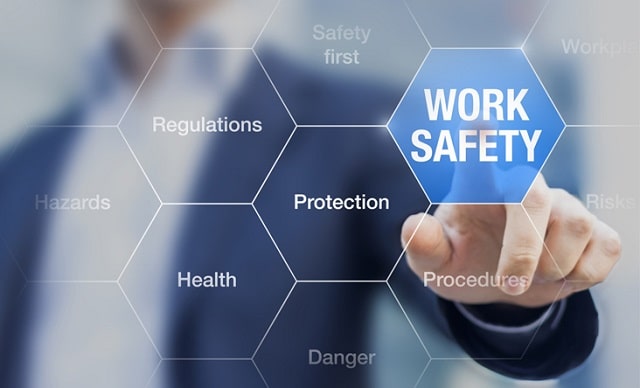Workplaces Are Measurably Safer, But Are They Safe Enough?

With workplace safety improving, how safe is safe enough? According to recent reports, workplace safety is nearing an all-time high, with marked improvements over past decades. In 2013, the occupational fatality rate reached an all-time low of 3.3 deaths per 100,000 workers (for the year). In 2020 and 2021, the rate is hovering around that level, reaching 3.5 deaths per 100,000 workers. That number may be even higher in 2022 due to multiple economic and labor factors.
There is no question that today’s workplaces are far, far safer than their counterpart workplaces in, say, the 1950s. But are they “safe enough” for workers?
Why Workplace Safety Improvements Still Matter
On some level, we shouldn't consider workplaces to be safe enough until we've reduced workplace fatality rates and injury rates to the absolute minimum – but it's also difficult to say what the “absolute minimum” is. It is unrealistic to attempt to reduce the occupational fatality rate to zero, because there are so many workers actively performing in risky environments that there's bound to be a death or an injury every now and then.
Our current occupational fatality rate is quite low. In a given year, for the average person, it translates to a risk of occupational death of only .0033 percent. But on a large scale, that still leads to the deaths of nearly 5,000 people per year. On top of that, tens of thousands of people end up seriously injured on the job.
For these reasons, workplace safety improvements still matter, and we should still have the priority to improve overall workplace safety.
Workplace Safety Dilemmas
There are several dilemmas standing in the way of this goal, however.
· Unavoidable Sources Of Injury And Death
It is easy to imagine occupational fatalities as borderline cartoonish incidents, where someone falls into a vat of chemicals or gets caught in factory machinery. But many deaths are much more mundane, such as having a worker for a trucking company die in a car accident. Because these are still categorized as occupational deaths, we may need to accept that some sources of injury and death on the job are practically unavoidable. No matter what, there are going to be risks, and even in the safest environment, injuries and deaths can still occur.
· The Absence Of Low Hanging Fruit
Most of the “low hanging fruit” in the world of workplace safety has already been harvested. We've already identified many of the biggest and most important workplace hazards, including specific chemicals and environmental conditions; we also know some of the most important strategies for maintaining workplace safety, like inspecting and replacing safety equipment regularly, mandating safety gear like hardhats and goggles when required, and threatening disciplinary action for any worker who doesn't prioritize safety. Now that we've already made sweeping improvements, it's harder to make measurable strides forward.
· The Cost Efficiency Problem
We also need to acknowledge that some measures may be able to improve safety, but they wouldn't be cost efficient to implement. It's tempting to say that human life is priceless, and we should be willing to pay anything to reduce risk, but this is not economically feasible. To remain operational, businesses need to find a way to make up for all their expenses; if it becomes too expensive to meet existing safety standards, the business will simply collapse.
· Workplace Safety For Marginalized Populations
Workplace fatality rates for certain marginalized groups, like Hispanic workers, are increasing, rather than decreasing. This suggests that while the overall fatality rate for workers is remaining low, certain segments of the population are facing higher risks than before. We need to be cognizant of this when attempting to solve the problem.
· Encouraging Conformity
Organizations like the Occupational Safety and Health Administration (OSHA) exist to help standardize workplace safety and make conditions safer for workers. But with OSHA’s power being reduced, and with employers in strict control of their workplace environments, it is hard to encourage all business owners to follow approved safety standards uniformly.
OSHA Challenges
OSHA has long fought for higher workplace safety, but in recent years, it has been able to exercise much less power.
· Reduced Enforcement Possibilities
OSHA has less power to enforce its regulations, giving more power to employers to make safety decisions.
· Reduced Fines
If a business is found guilty of shirking certain responsibilities or violating worker safety in some egregious way, it can be fined – but today’s fines are greatly reduced, making them less effective deterrents.
· Lack Of Prosecution
Even if an employer is negligently responsible for a worker’s death, there is no guarantee they’re going to be prosecuted for that wrongful death.
Conclusion
It is hard to say exactly with the right path forward is. On one hand, we should never remain complacent with workplace safety, and we should be constantly working to make our environments safer. On the other hand, workplaces are already quite safe, and further improvements on a large scale would be both difficult to find and expensive to implement.
